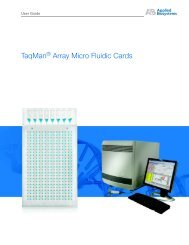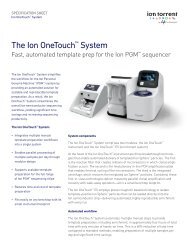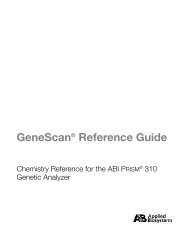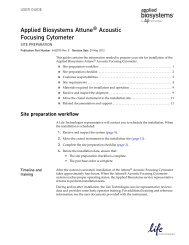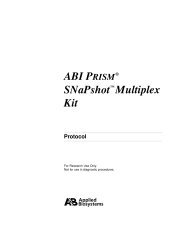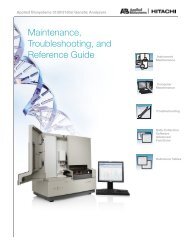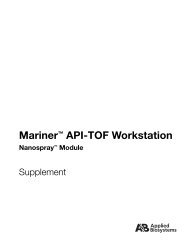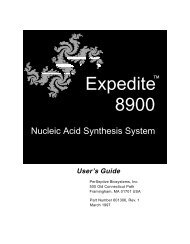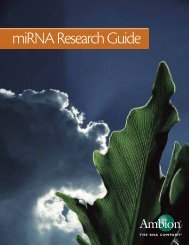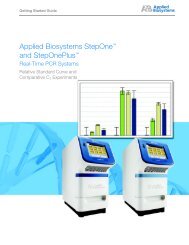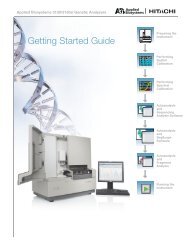Applied Biosystems SOLiD™ 4 System SETS Software User Guide ...
Applied Biosystems SOLiD™ 4 System SETS Software User Guide ...
Applied Biosystems SOLiD™ 4 System SETS Software User Guide ...
You also want an ePaper? Increase the reach of your titles
YUMPU automatically turns print PDFs into web optimized ePapers that Google loves.
<strong>Applied</strong> <strong>Biosystems</strong> SOLiD 4 <strong>System</strong> <strong>SETS</strong> <strong>Software</strong> <strong>User</strong> <strong>Guide</strong><br />
Appendix B Advanced Topic: Data Analysis Overview<br />
Fundamentals of color-space analysis B<br />
Figure 3 Requirements that assign color for a 2-base code<br />
Principles of ligation-based chemistry and 2-base encoding<br />
The SOLiD 4 <strong>System</strong>’s sequencing technology is based on<br />
sequential ligation of dye-labeled oligonucleotide probes. Each<br />
probe assays two base positions at a time (Figure 2). The system uses<br />
four fluorescent dyes to encode for the sixteen possible 2-base<br />
combinations. Multiple ligation cycles of probe hybridization,<br />
ligation imaging, and analysis are performed to extend the strand<br />
from a primer hybridized to a ligated adaptor by the immobilized<br />
bead (P1 adaptor). The resulting product is then removed and the<br />
process repeated for 5 more rounds with primers hybridized to<br />
positions n-1, n-2, and so on, in the P1 adaptor.<br />
There are several fundamental properties unique to ligation-based<br />
sequencing. These properties contribute to the high accuracy<br />
inherent in the SOLiD 4 <strong>System</strong>. The advantages of these<br />
properties and their contribution to data quality are:<br />
Two bases are interrogated in each ligation reaction, increasing<br />
specificity.<br />
143



